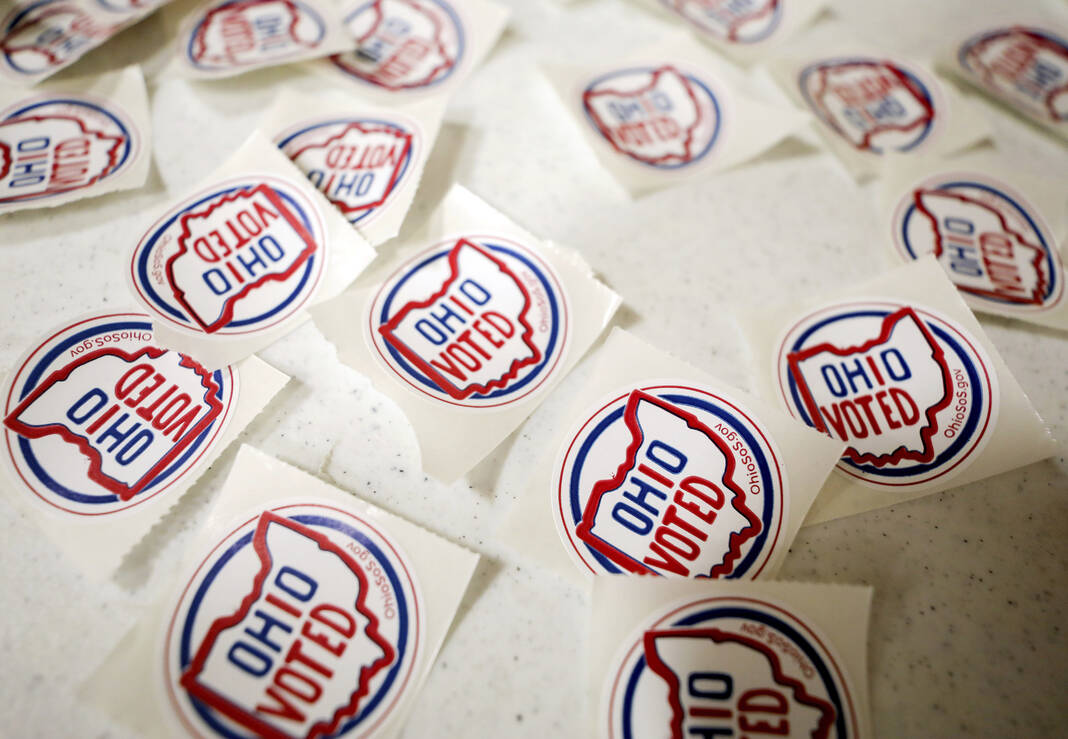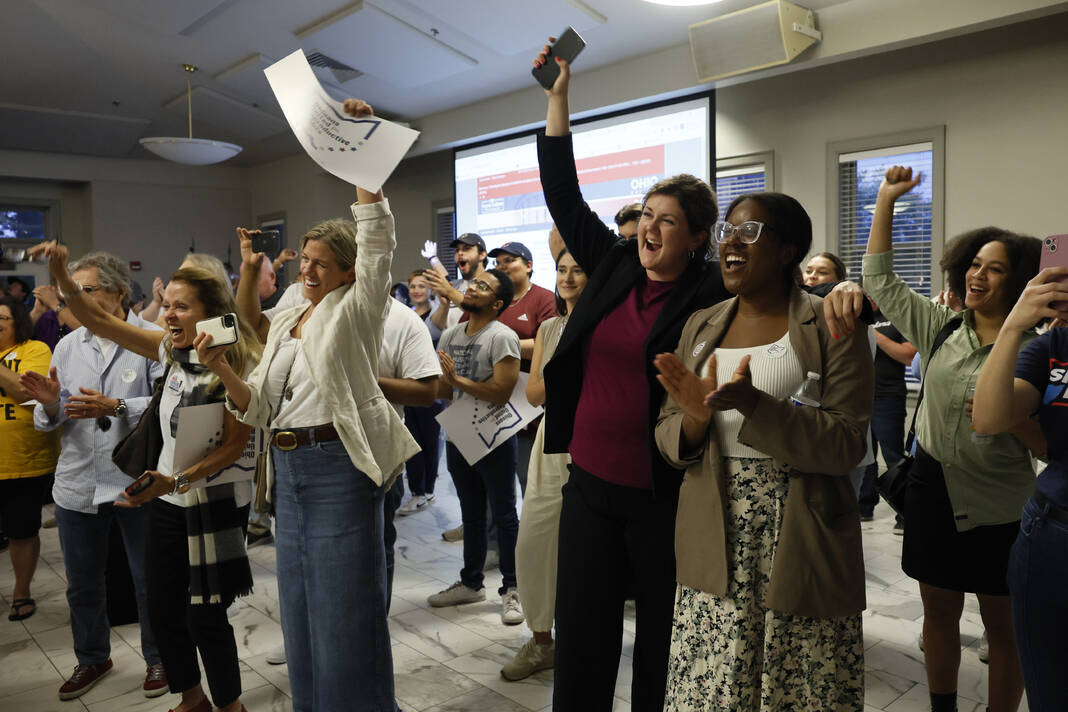
“I voted” stickers are displayed at the exit of the polling site at Toth Elementary School, Tuesday, Aug. 8, 2023 in Perrysburg, Ohio. Ohioans are voting on Issue 1. Voters in Ohio on Tuesday are weighing whether to make it more difficult to change the state’s constitution, a decision that will have national implications in the debate over the future of abortion rights in the United States. (Kurt Steiss/The Blade via AP)

WASHINGTON (AP) — Ohio voters rejected a proposal that would have made it more difficult for voters to amend the state constitution, including one measure set for the November ballot that would guarantee abortion rights in the state.
The Associated Press has called Tuesday’s race, determining that supporters of the proposal known as Issue 1 fell short in their effort to require future changes to the state constitution to win the support of 60% of voters instead of a straight majority.
Votes cast against the measure, or No votes, lead Yes votes by more than 350,000, with nearly 90% of the expected vote tallied and some of the state’s largest and most Democratic-friendly regions, including Cuyahoga County, yet to report complete results.
Advance votes, which are cast by mail or in-person before Election Day, broke heavily for No, about 70% to 30%. More than 700,000 votes were cast before Election Day.
The No side also appeared to narrowly lead among voters who cast their ballots on Election Day. That, in addition to the lopsided result in the advance vote, created a lead that the Yes side could not overcome.
The size of the vote lead for the No side indicates that a sizable number of Republicans voted against the measure. The No side was comfortably ahead in areas that Donald Trump carried narrowly in the 2020 presidential election. Although Yes led in areas Trump won by greater margins in 2020, it fell far short of Trump’s performance in nearly every county in the state. No votes had an overwhelming lead in areas Joe Biden won in 2020, as expected.
Data from political firm L2 provided further evidence of Republican crossover voters. While voters do not register by political party in Ohio, the firm’s data on early in-person and mail voting indicates that Democrats cast about 50% of ballots before Election Day, compared with 40% by those identified as Republicans. Independents cast the remaining ballots, according to the firm, which models party affiliation using the partisan primary a voter most recently participated in.
Women turned out in higher numbers among those who voted before Election Day, according to L2. In particular, Democratic women comprised the largest share of votes cast in advance, more than Democratic men and Republican men and women.
The text of Issue 1 does not specifically mention abortion or reproductive rights, but the outcome of Tuesday’s special election would directly affect the percentage of votes needed to pass a separate ballot measure that would establish “a fundamental right to reproductive freedom” in the state constitution. That measure qualified for the November ballot last month, making Issue 1 a central battleground in the national debate over abortion.
Since the Supreme Court overturned the landmark Roe vs. Wade decision that legalized abortion, ballot measures in other states, such as Kansas, Kentucky and Michigan, have shown that a 50% to 60% majority of voters in those states support legalized access to abortion.
In Ohio, support for abortion being legal in most or all cases was at 59% among midterm voters last year, according to AP VoteCast. That suggests that, had Issue 1 passed, abortion rights advocates would have faced an uphill battle in codifying abortion rights in the state constitution this November.

